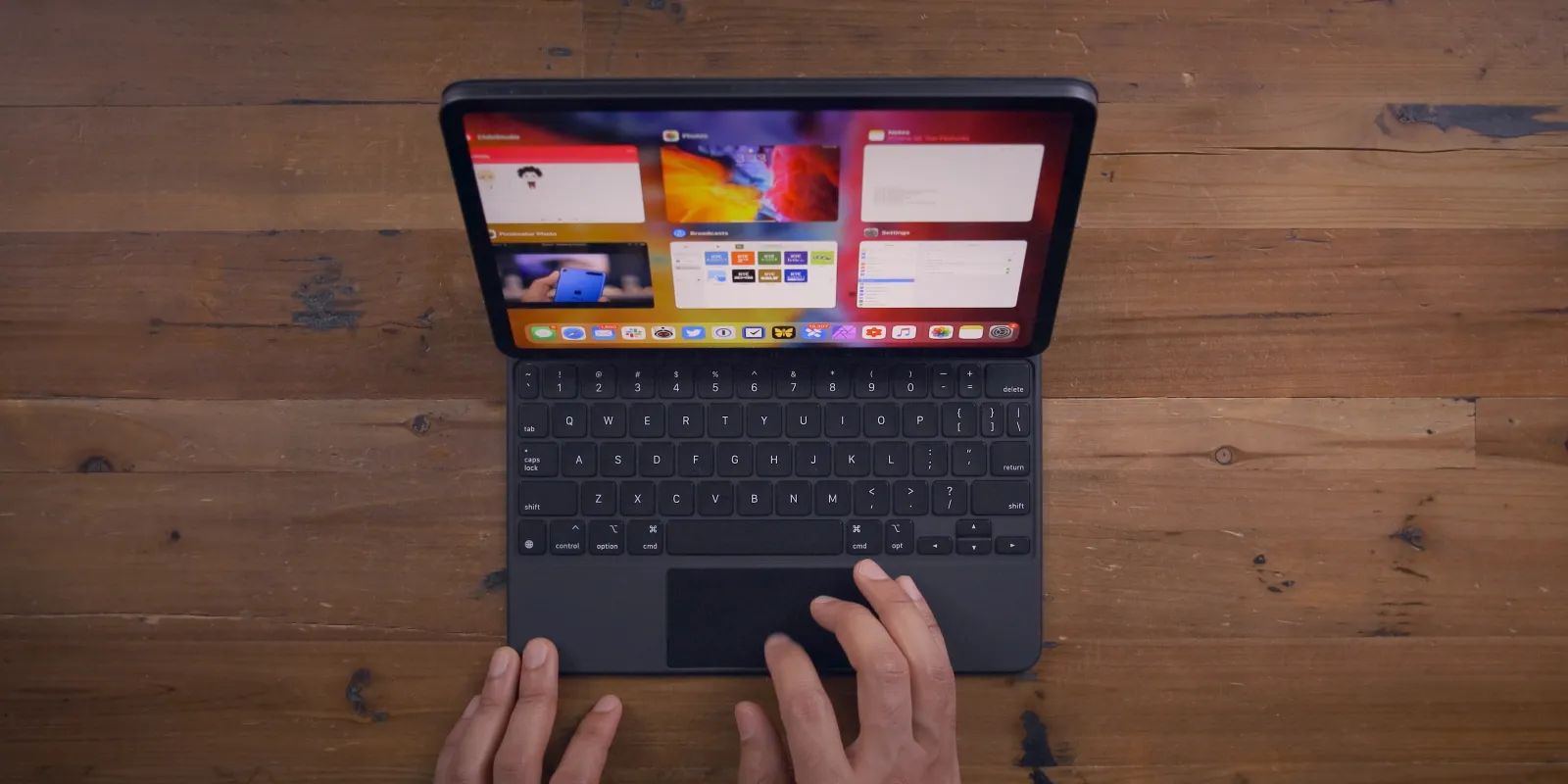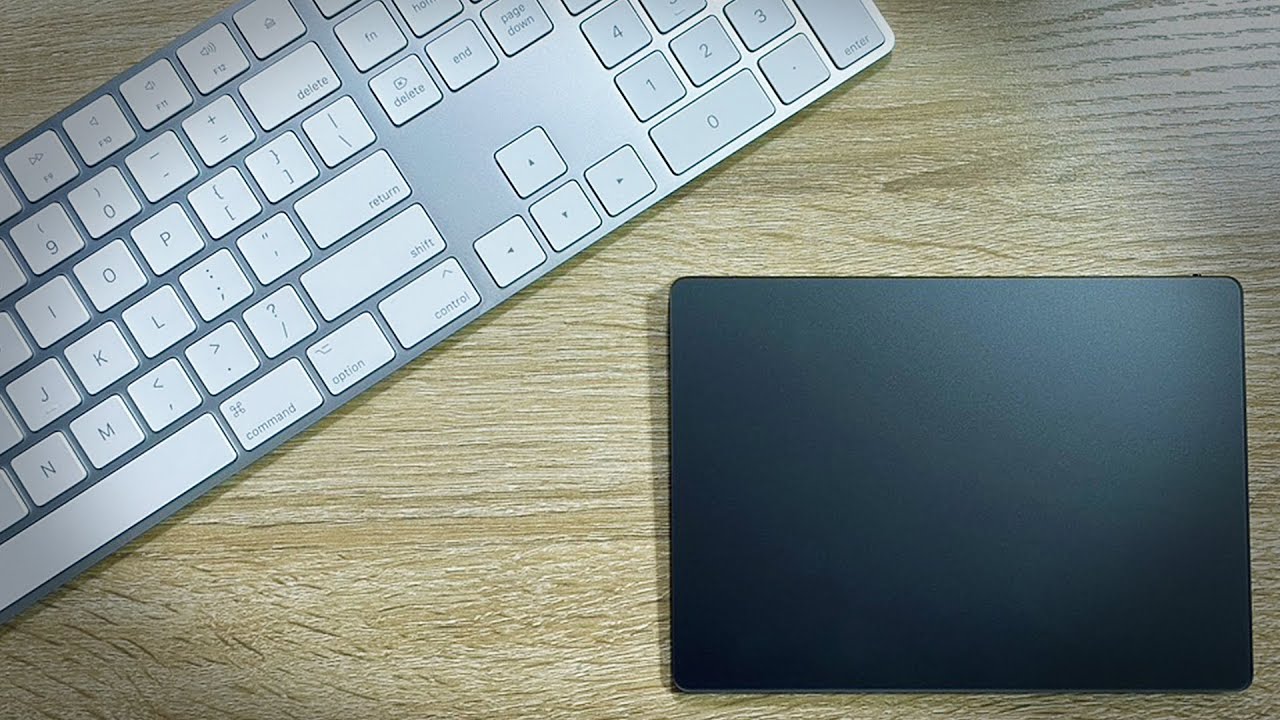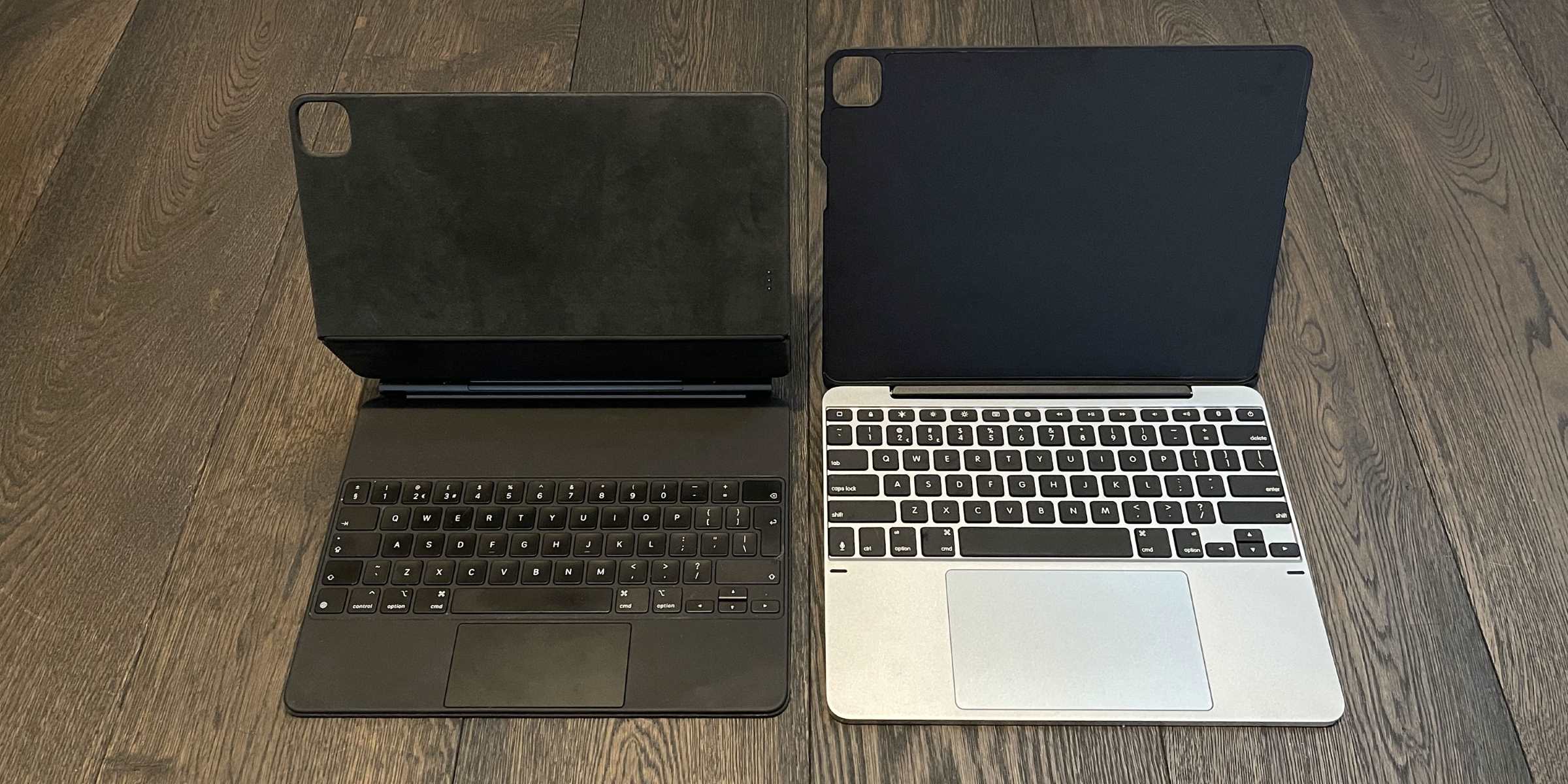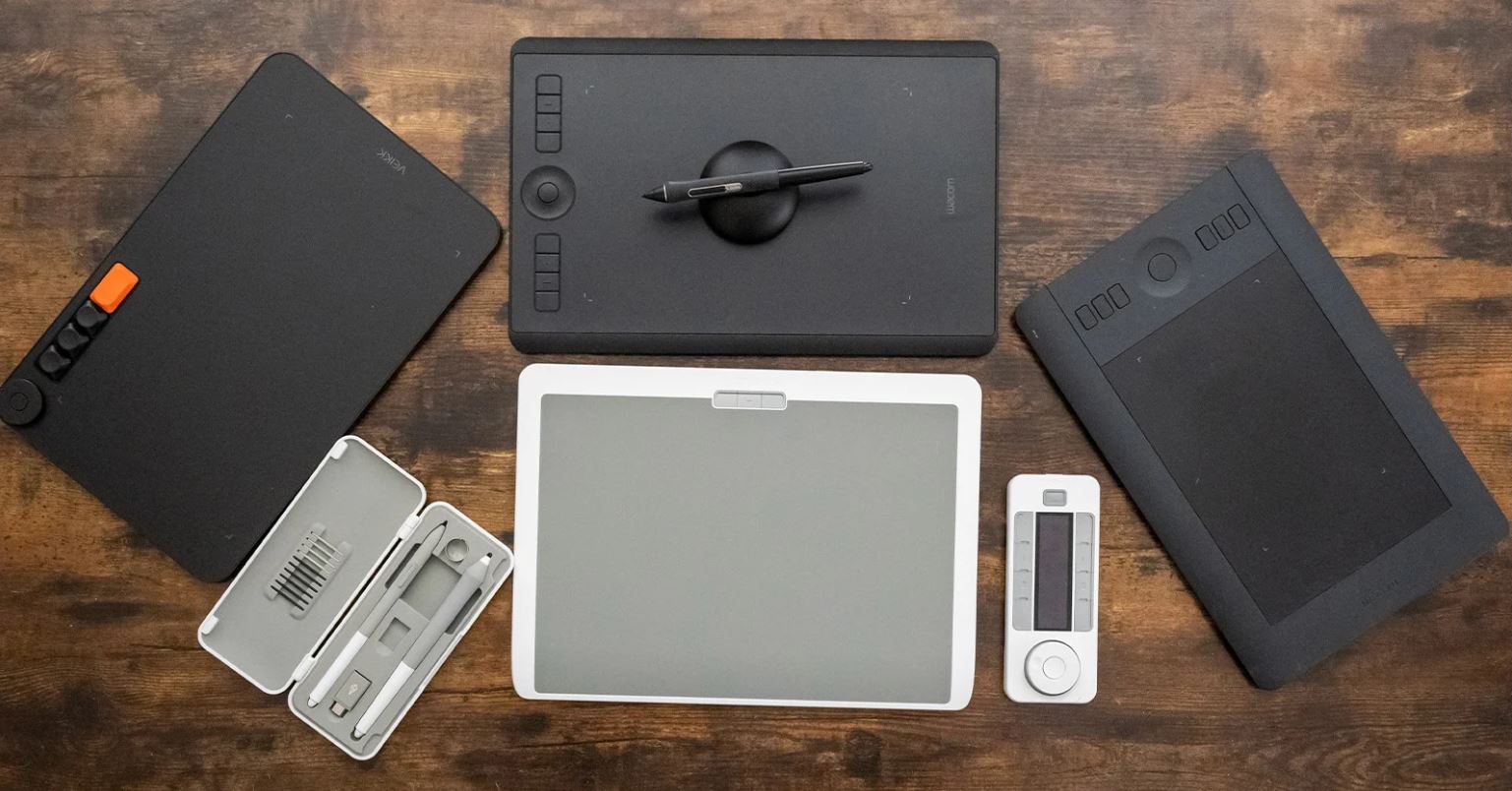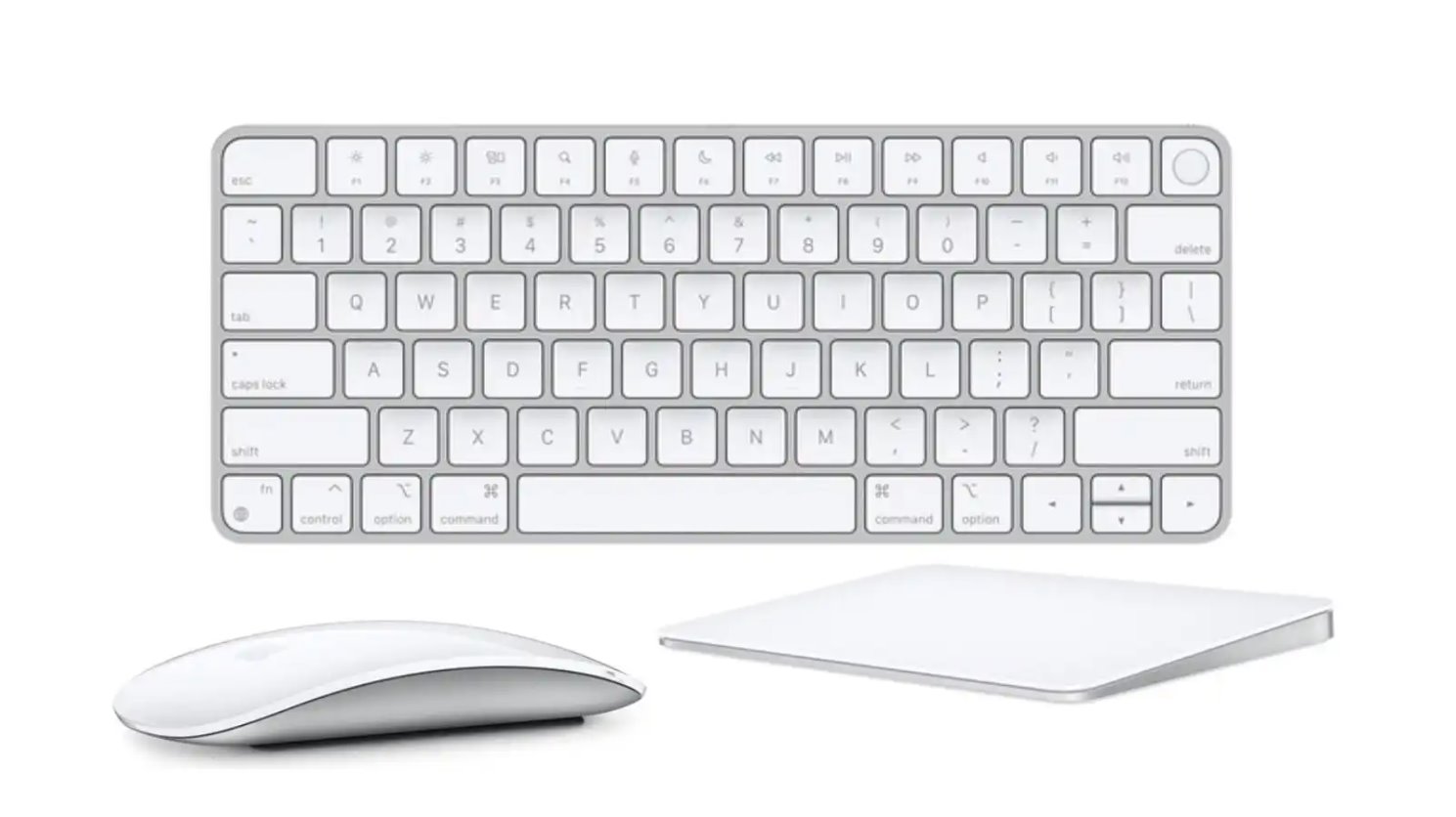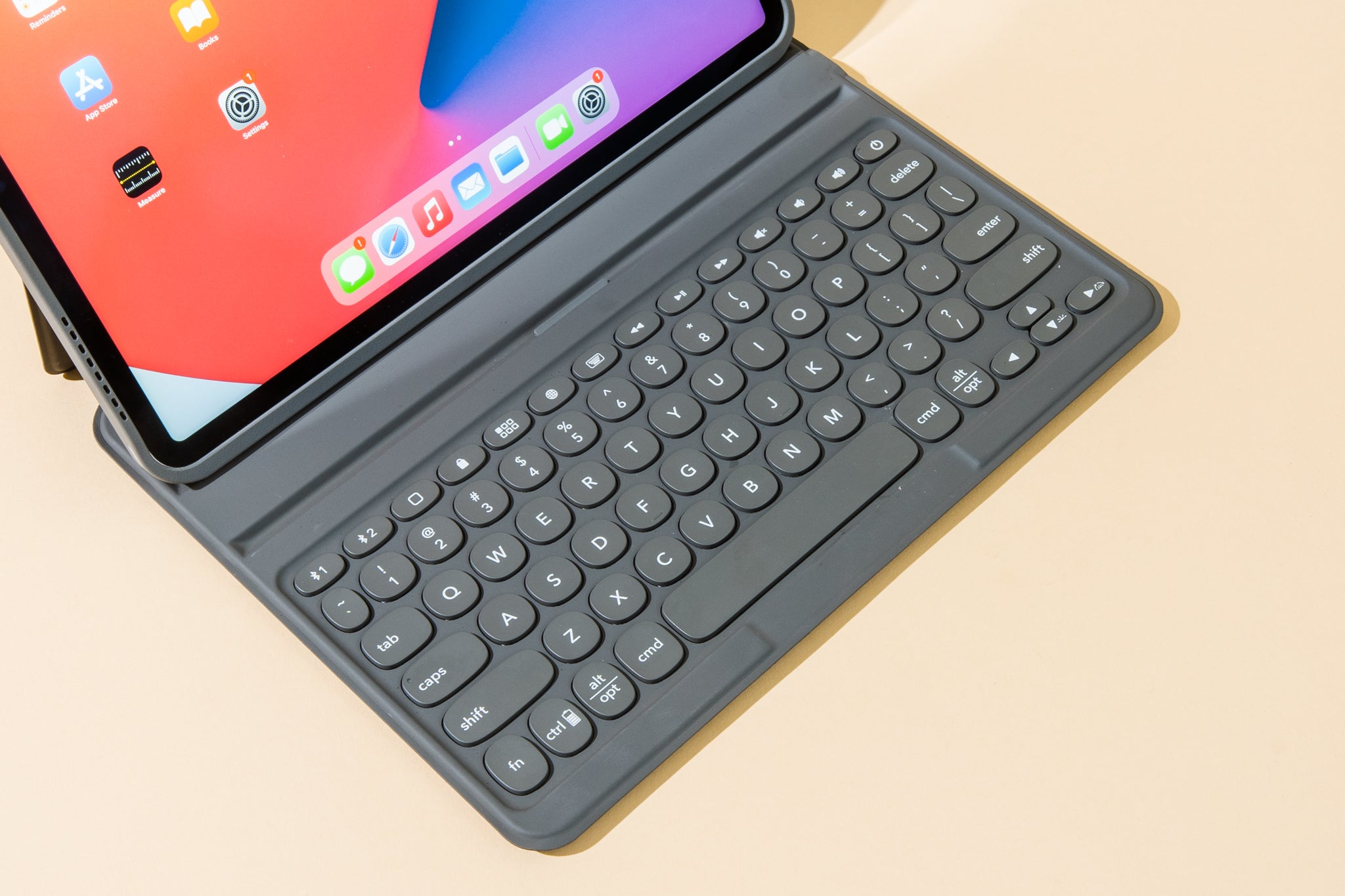Introduction
Welcome to the world of wireless typing convenience with the Magic Keyboard from Apple. With its sleek design and seamless functionality, the Magic Keyboard is a popular choice among Mac users. However, there may be instances when you encounter issues and find that your Magic Keyboard is not working as expected. Don’t worry, you’re not alone in this experience.
There could be several reasons why your Magic Keyboard is not functioning properly. It could be due to software glitches, connectivity issues, low battery levels, or even physical obstructions affecting the keyboard’s performance. However, fret not, as in this article, we will explore various troubleshooting steps that can help you get your Magic Keyboard up and running again in no time.
Whether you’re experiencing unresponsiveness, input lag, or connectivity problems, we have got you covered. By following the troubleshooting steps outlined in this guide, you will be able to identify and resolve common issues that may arise with your Magic Keyboard.
So, without further ado, let’s dive into the world of troubleshooting and uncover the reasons why your Magic Keyboard may not be functioning as intended. By the end of this article, you will be equipped with the knowledge and solutions to resolve most common issues, ensuring a seamless typing experience with your Magic Keyboard.
Possible Reasons for Your Magic Keyboard Not Working
There are several potential causes for your Magic Keyboard not working properly. Understanding these reasons can help you troubleshoot and resolve the issue more effectively. Here are some common culprits:
- Software Glitches: Sometimes, software updates or conflicts can affect the performance of your Magic Keyboard. Incompatible software or outdated drivers may cause connectivity issues or unresponsiveness.
- Connectivity Problems: Bluetooth connectivity issues can occur due to interference from other devices, weak Bluetooth signals, or outdated firmware. These can lead to delays or loss of connection between your Magic Keyboard and your Mac.
- Low Battery: If your Magic Keyboard has been in use for a while without being charged, it may have run out of battery. A low battery can result in unresponsiveness or erratic behavior.
- Physical Obstructions: Objects or obstacles near your Magic Keyboard can interfere with its wireless connectivity. Large metal objects or electromagnetic devices in close proximity to the keyboard can disrupt the Bluetooth signal.
- Hardware Defects: In rare cases, hardware defects or damage to the Magic Keyboard can cause it to malfunction. This can include issues with the keys, switches, or internal components.
By identifying the potential reasons behind your Magic Keyboard’s malfunction, you can narrow down the troubleshooting steps needed to resolve the issue. Let’s move on to the next section, where we will explore these troubleshooting steps in detail.
Troubleshooting Steps for Your Magic Keyboard
When your Magic Keyboard is not working as expected, there are several troubleshooting steps you can take to resolve the issue. These steps will help you identify the root cause and apply the necessary remedies. Let’s walk through the most effective solutions:
- Check for Software Updates: Ensure that your Mac is running the latest version of macOS. Additionally, check for any available updates for the Magic Keyboard’s firmware. Updating the software can often resolve compatibility issues and improve performance.
- Reset Bluetooth Settings: If you’re experiencing connectivity problems, resetting the Bluetooth settings in your Mac can help. Go to System Preferences > Bluetooth, select your Magic Keyboard, and click on the “X” button to remove it. Then, restart your Mac and pair the keyboard again.
- Pair Your Magic Keyboard Again: If your Magic Keyboard is not connecting to your Mac, re-pairing it can solve the issue. Turn off the keyboard, go to System Preferences > Bluetooth, click on the “+” button to add a new device, and follow the on-screen instructions to pair your Magic Keyboard.
- Check Battery Level: Ensure that your Magic Keyboard has sufficient battery power. Check the battery level by clicking on the Bluetooth icon in the menu bar and selecting your keyboard. If the battery is low, charge it using the Lightning cable included with the keyboard.
- Clean Your Magic Keyboard: Dust, dirt, and debris can interfere with the functioning of your keyboard. Use a soft, lint-free cloth to gently clean the keys and the surface of the keyboard. Be careful not to use excessive moisture or cleaning agents that may damage the keyboard.
- Contact Apple Support for Further Assistance: If none of the above steps resolve the issue, it’s advisable to contact Apple Support or visit an Apple Store for further assistance. They can provide specialized guidance and determine if there’s a hardware defect that needs to be addressed.
By following these troubleshooting steps, you should be able to resolve most common issues with your Magic Keyboard. However, if the problem persists, don’t hesitate to seek professional support. Now, let’s wrap up the article.
Check for Software Updates
One of the first troubleshooting steps to take when your Magic Keyboard is not working properly is to check for software updates. Software updates can address compatibility issues, bug fixes, and improve overall performance. Here’s how you can ensure your software is up to date:
- Check macOS Updates: Go to the Apple menu and select “System Preferences”. Click on “Software Update” to check for any available updates for macOS. If updates are available, click “Update Now” to install them. Keeping your operating system up to date can help resolve keyboard-related software issues.
- Check for Magic Keyboard Firmware Updates: Apple occasionally releases firmware updates for the Magic Keyboard to enhance its functionality and address any known issues. To check for updates, ensure your Magic Keyboard is connected to your Mac and go to “System Preferences” > “Keyboard” > “Keyboard Firmware Update”. If a firmware update is available, follow the on-screen instructions to install it.
It’s vital to regularly check for software updates, as they can solve known software-related issues and improve the overall performance of your Magic Keyboard. By installing the latest updates, you ensure that your keyboard is optimized for compatibility with the operating system and other software on your Mac.
If updating your software does not resolve the issue, you can move on to the next troubleshooting step: resetting the Bluetooth settings.
Reset Bluetooth Settings
If you’re facing connectivity issues with your Magic Keyboard, resetting the Bluetooth settings on your Mac can often help resolve the problem. Here’s how you can do it:
- Turn Off Bluetooth: First, click on the Bluetooth icon in the menu bar and select “Turn Bluetooth Off”. This will disable the Bluetooth functionality on your Mac.
- Reset Bluetooth Module: Open the “Finder” and navigate to the “Go” menu. From there, select “Go to Folder” and enter the following path:
/Library/Preferences/. Look for the file named “com.apple.Bluetooth.plist” and move it to the Trash. This will reset the Bluetooth module on your Mac. - Restart your Mac: After moving the file to the Trash, restart your Mac. This will initiate the process of resetting the Bluetooth settings.
- Turn Bluetooth On: Once your Mac has restarted, click on the Bluetooth icon in the menu bar again and select “Turn Bluetooth On. This will enable Bluetooth functionality on your Mac.
- Re-pair your Magic Keyboard: After resetting the Bluetooth settings, go to “System Preferences” > “Bluetooth” and remove your Magic Keyboard from the list of paired devices. Then, turn off the Magic Keyboard and turn it back on. Follow the on-screen instructions to re-pair your keyboard with your Mac.
Resetting the Bluetooth settings can fix any underlying connectivity issues between your Mac and the Magic Keyboard. By following these steps, you are essentially starting afresh with the Bluetooth connection, which can help establish a stable and reliable connection between the devices.
If resetting the Bluetooth settings does not resolve the issue, move on to the next troubleshooting step: pairing your Magic Keyboard again.
Pair your Magic Keyboard again
If your Magic Keyboard is not connecting to your Mac, re-pairing the keyboard can often resolve the issue. Follow these steps to pair your Magic Keyboard again:
- Turn off the Magic Keyboard: Press and hold the power button on the Magic Keyboard until the green LED indicator turns off.
- Go to System Preferences: Click on the Apple menu in the top-left corner of your screen and select “System Preferences”.
- Select Bluetooth: In the System Preferences window, click on the “Bluetooth” icon.
- Remove Magic Keyboard: In the Bluetooth settings, locate your Magic Keyboard in the list of devices and click on the “X” next to it to remove it.
- Turn on the Magic Keyboard: Press the power button on the Magic Keyboard and wait for the green LED indicator to start flashing.
- Pair the Magic Keyboard: In the Bluetooth settings, click on the “+” button and select your Magic Keyboard from the list of available devices. Follow the on-screen instructions to complete the pairing process.
- Test the connection: Once the pairing is complete, test the connection by typing on the Magic Keyboard. Ensure that the keyboard is working as expected.
By following these steps, you can establish a new connection between your Mac and the Magic Keyboard, eliminating any potential pairing issues that may have been causing the problem. If the keyboard is still not working, move on to the next troubleshooting step: checking the battery level.
Check Battery Level
If your Magic Keyboard is unresponsive or not working properly, it’s essential to check the battery level. A low battery can cause connectivity issues and result in unresponsiveness. Here’s how you can check and manage the battery level of your Magic Keyboard:
- Check Battery Status: Click on the Bluetooth icon in the menu bar and select your Magic Keyboard. A dropdown will appear showing the battery level of your keyboard. If the battery is low, it’s time to recharge.
- Charge the Keyboard: Use the Lightning cable that came with your Magic Keyboard to connect it to a power source, such as a USB port on your computer or a wall charger. Allow the keyboard to charge for a while until the battery is adequately replenished.
- Optimize Battery Usage: To conserve and prolong battery life, you can disable some features of the Magic Keyboard. For example, you can adjust the keyboard backlight intensity in “System Preferences” > “Keyboard”. Additionally, you can enable the “Automatically illuminate keyboard in low light” option to optimize battery usage.
- Monitor Battery Health: Over time, the battery health of your Magic Keyboard may degrade. To monitor the battery’s health, hold the power button until the green LED indicator blinks. The number of blinks indicates the battery health. If you notice a significant decline, consider contacting Apple Support for further assistance.
Regularly checking and maintaining the battery level of your Magic Keyboard ensures that it has sufficient power to function optimally. By keeping the battery charged and monitoring its health, you can prevent and resolve issues related to low battery levels.
If the battery level is not the cause of your Magic Keyboard issues, proceed to the next troubleshooting step: cleaning your keyboard.
Clean your Magic Keyboard
If your Magic Keyboard is not working as expected, it could be due to debris or dirt interfering with the keys or the overall functionality of the keyboard. Cleaning your Magic Keyboard can help restore its performance. Here’s how you can effectively clean your Magic Keyboard:
- Power off the Keyboard: Turn off your Magic Keyboard by pressing and holding the power button until the green LED indicator turns off.
- Use Compressed Air: Gently use a can of compressed air to blow away any dust or debris between the keys. Be sure to hold the can upright and use short bursts to avoid causing any damage to the keyboard.
- Wipe the Keys: Dampen a lint-free cloth with water or isopropyl alcohol. Lightly wipe the surface of each key, removing any dirt or grime. Avoid using excessive moisture to prevent damage. You can also use a soft, slightly dampened cotton swab for hard-to-reach areas.
- Clean the Surface: Use the damp cloth to wipe down the surface of the keyboard. Pay attention to any sticky or stained areas, gently rubbing to remove any dirt or residue. Dry the keyboard with a clean, dry cloth.
- Allow Drying Time: Before turning the keyboard back on, ensure that it is completely dry. This will prevent any moisture from affecting its functionality.
Regularly cleaning your Magic Keyboard helps maintain its performance and prevents build-up of dirt or debris that can cause keys to stick or affect the overall responsiveness. By adopting a regular cleaning routine, you can enjoy a seamless and enjoyable typing experience with your Magic Keyboard.
If cleaning the keyboard doesn’t resolve the issue, it may be time to seek further assistance. Let’s explore the next step: contacting Apple Support.
Contact Apple Support for Further Assistance
If you have followed all the troubleshooting steps and your Magic Keyboard is still not working as expected, it may be time to reach out to Apple Support for further assistance. Their team of experts is equipped to handle any technical issues you may encounter with your Apple accessories, including the Magic Keyboard. Here’s how you can contact Apple Support:
- Online Support: Visit Apple’s official support website and navigate to the Magic Keyboard section. You’ll find a range of articles, tutorials, and frequently asked questions that may help resolve your issue. If you can’t find a solution, you can initiate a chat or schedule a call with an Apple Support representative for personalized assistance.
- Apple Support App: Download the Apple Support app to your iPhone or iPad. This app provides a convenient way to access Apple’s support resources and connect with a support representative via chat or phone call.
- Apple Store Appointment: You can also visit an Apple Store or an authorized service provider to have your Magic Keyboard assessed. Book an appointment online or through the Apple Support app to ensure a smooth and efficient experience.
Apple support representatives possess in-depth knowledge and expertise and can assist you in diagnosing and resolving complex issues with your Magic Keyboard. If there is an underlying hardware defect or a problem that requires repair or replacement, they will guide you through the appropriate steps to ensure a resolution.
Remember, Apple Support is there to help you. Don’t hesitate to reach out to them if you’re unable to resolve the issue on your own. They are dedicated to providing excellent service and ensuring that you have a functioning Magic Keyboard.
Now that we’ve explored the troubleshooting steps and the option to contact Apple Support, let’s summarize our findings.
Conclusion
Having a Magic Keyboard that isn’t working properly can be frustrating, but with the right troubleshooting steps, you can get it back on track. In this article, we explored some common reasons why your Magic Keyboard may not be functioning correctly and provided practical solutions to resolve the issues.
We began by discussing possible reasons for your Magic Keyboard not working, such as software glitches, connectivity problems, low battery, physical obstructions, and hardware defects. Understanding these potential causes can help you narrow down the troubleshooting steps needed for your specific situation.
We then explored various troubleshooting steps to address these issues. Checking for software updates ensures that your Mac and Magic Keyboard have the latest software versions, which can enhance compatibility and performance. Resetting Bluetooth settings and re-pairing your Magic Keyboard can help resolve connectivity issues. Checking the battery level and cleaning the keyboard can address power and debris-related problems.
If all else fails, don’t hesitate to contact Apple Support for further assistance. Their knowledgeable team can provide personalized guidance and help resolve any lingering issues with your Magic Keyboard.
Remember to stay patient and thorough in your troubleshooting process. By following the steps outlined in this article, you’ll be well-equipped to diagnose and resolve most common issues with your Magic Keyboard, ensuring a seamless and enjoyable typing experience.
Now, go forth and type away with your fully functional Magic Keyboard!







